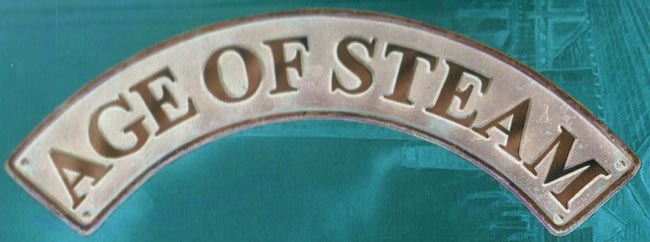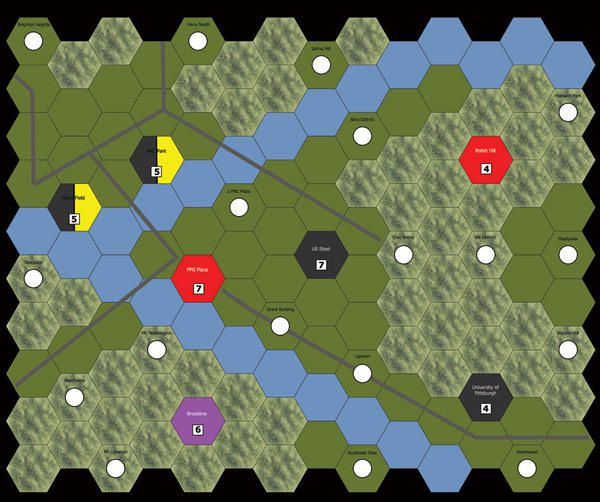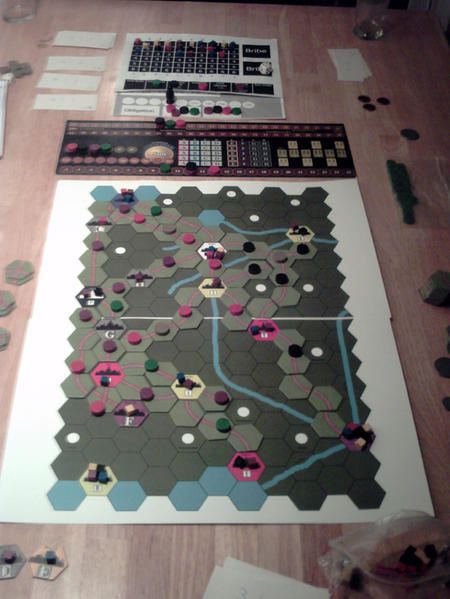That's a along time ago, we did not make a serious update here!!!
I found time to write few words about these last Essen releases this nights !
For Paris, I wanted to make something new. I had the real map of the districts of Paris and I thought it would be nice to make something interesting with. I have to say that I am teaching the graph theory to my student here in France, so I love drawing graphs. That was easy to imagine rules for Paris with the Seine and the Fly boats that may deliver cubes faster all along the districts.
Some adjustements were needed to make the map working (prices of connection, #links, shares)
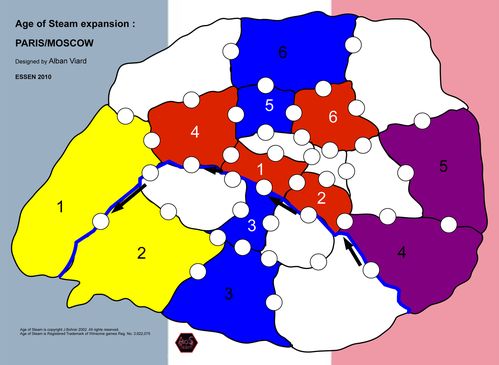
For Moscow, I wanted to use the same idea of connections between districts, and I drew the graph of the disctrict of Moscow, quite a hard work since there are more than 100 ! The first games were very dispointed so I immediately gave up this idea. I also want to make a difficult map and an easy way to design one is to change the color of the cities during the game. In Moscow, the cities are black when the mafia enter the district.
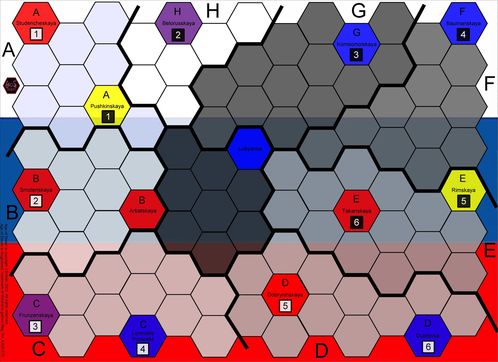
I modify the # of districts to make the game play easier. The final map contains 8 districts that are becoming black in clockwise. A new action "Mafia" let the player to choose which district is becoming black for this turn.
Hexpansion/Robot: Two years ago I asked to John if he knows a publisher who could make me 12 new hex tiles. As usual, he was kind to contact one of his friend. But to make the deal profitable, I had to make 1000 copies that would need 3 or 4 years to be sold. So I gave up the idea to publish these 12 new hex tiles that are more than modify the color of the basic cities on the maps. Last month, I decided to make this hexpansion available for geeks of AoS, but they would need to cut themselves the hexes. I added the Robot factory expansion that I designed 3 years ago for the Moon map. This new tile equilibrates the spheric map (yes I know that the map is not a sphere) . As soon as all the cities are connected to the central hex, a Robot factory is built on the fas East or West new cities. This factory produces a black cube each time a cube is delivered. The factory is a multi color city.... when it is not the night....
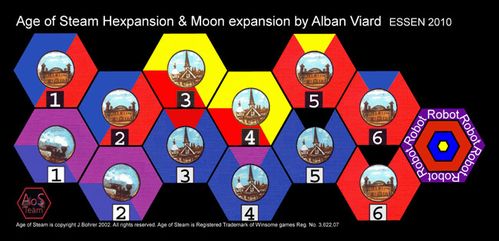
Two years ago , I bought 600 boxes to a german firm. In 2008, I released 150 Age of Steam box #1 .The first aim was to package our expansions the best way as a tiny publisher could do. But I wanted something professional, so I contacted a german firm. Some geeks were dispointed with the quality of the blank box. I asked the price for a professional design, but again, if I produced less than 1500 copies, I won't see my money back until 2 years if everything is going well. I chose to buy 600 pro. boxes with no design on it. The box is useful and I sell it with a very small benefit since I have to pay for the 600 boxes two years ago ! I really hope you will understand my choice
Last year I sold Holland/Madagascar for 25E in a big envelop. This year, it is hardly the same price since Paris/Moscow in the Age of Steam box #2 would cost 25E
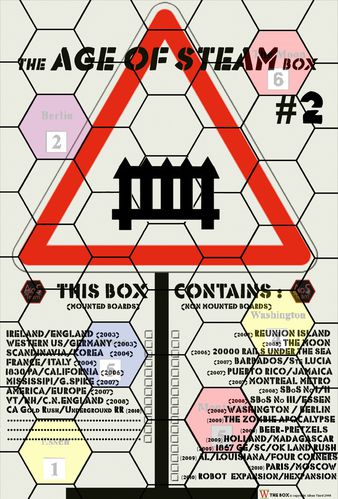
The Hexpansion/Robot factory expansion is sold 15E
The Essen kit contains both expansion/Mini expansions , and it is priced at 40E
Like past year, the US geeks were first served since it is easier for me to ship the sets during the summer holidays. In september/October it is the rush for me with the students.
To reserve the ESSEN10 kit, please send a message to ageofsteam10@yahoo.fr. This kit is available for picking on the Winsome booth, hall 10, Stand 66, ONLY on Thursday morning between 10 to noon. The print run is 100 sets (Essen) + 50 sets (US). The US sets are SOLD OUT.
To conclude, I want to thank again John B. who always support my ideas and always help me when I need.
My next article will deal with my first abstract game... nothing to do with Age of Steam this time...

